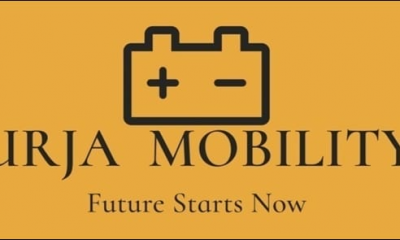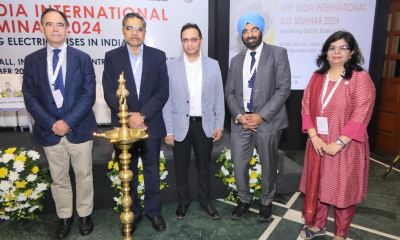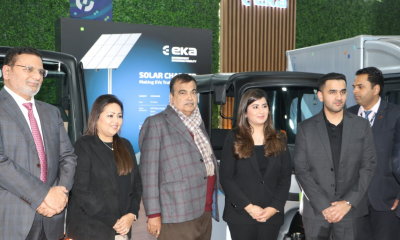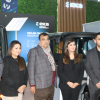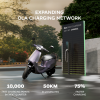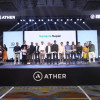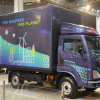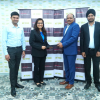EV News
Godawari Electric – Pioneering A Clean And Innovative Future With ‘Eblu’

In an era where sustainable transportation is not just a trend but a necessity, Godawari Electric has emerged as a beacon of innovation and environmental consciousness in the electric vehicle industry. The company’s EV brand name, Eblu, is a clever amalgamation of “electric” symbolizing their focus on electric mobility and “blue” representing cleanliness and environmental sustainability. With their forward-thinking ethos encapsulated in the tagline “Door Ki Socho,” meaning “think ahead,” Godawari Electric emphasizes a long-term strategy and vision that permeates through all levels of the company—from management to employees, customers, and dealers. This philosophy drives their commitment to developing cutting-edge technology and innovative products that meet the evolving needs of consumers and the environment alike. Founded with roots deeply connected to Raipur, the company leverages its strategic location for optimal manufacturing and distribution, aiming to deliver high-quality, reliable electric vehicles across India. Eblu’s comprehensive product range and their expansion plans underline their dedication to becoming a leader in the electric vehicle market, setting new standards for what the future of transportation can and should be. In an Exclusive Interaction with Raghul Sivaguru, Mr. Hyder Khan, the CEO of Godawari Electric, discusses the company and the trends, alongside the expansion plans and future products.
Let’s start with your brand name – Eblu. What does it stand for? And what is the significance of your tagline “Door ki Socho”?
Eblu is essentially electric blue. We wanted to create a catchy brand name that people can easily remember, connecting it to electricity (E) and the color blue, which symbolizes cleanliness. That’s how we arrived at the name Eblu. “Door ki socho” means “think ahead.” This is our core philosophy, encouraging everyone—employees, management, customers, and dealers—to adopt a long-term strategy and vision. Our vehicles embody the latest technology and innovative ideas, reinforcing the theme of thinking ahead.

As a relatively new entrant to the industry, what motivated you to launch products across different segments? Why did you choose Raipur as your manufacturing location?
Raipur is the base of our parent company, the Hira Group and the Godawari Group. Our headquarters and promoters are all from Raipur, providing strong political and local connections, which facilitate fast permissions and approvals. Additionally, our plants have substantial production capacity, and Raipur’s central location in India balances transportation costs across the country. However, as we grow, we plan to set up assembly units in the South and East within the next six to eight months to ensure faster deliveries while maintaining control from Raipur.
Are the promoters involved in any phase of your business? I noticed you offer unisex and kid cycles, which is a relatively untapped segment. Do you enjoy a monopoly with these products?
Our strategy includes a full range of two- and three-wheelers—cycles, scooters, motorcycles, and L3 & L5M three-wheelers. We might eventually introduce four-wheeler loader vehicles. We saw cycles as a convenient mode of transportation and offer a three-year warranty on the battery and charger. We have two models: one for students priced at 20,000 INR, and a more robust model for e-commerce deliveries. The demand is growing, especially at exhibitions where inquiries are high.
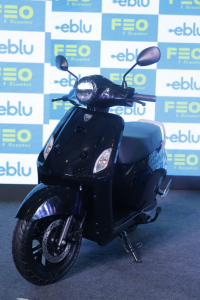
Is lightweighting the reason for choosing DCPD panels for the Rozee? What are the factors behind claiming Feo as India’s first family e-scooter?
For the Rozee E-Auto, we wanted a strong, durable body that doesn’t age quickly, leading us to choose DCPD panels. These panels are unbreakable, have high elasticity, and maintain a new appearance for years. Our E-Auto has a 200 AH battery, offering 160 km mileage, and independent rear suspension for safety. Regarding Feo, we identified a demand for family e-scooters, focusing on comfort, safety, utility, and value. It was designed as a non-flashy, decent scooter suitable for families. Although building the brand takes time, the product has been well received.
With 60 dealerships in India, does Godawari Electric plan to expand its network in the upcoming fiscal year? Why haven’t you launched an E-Bike?
As of May 1st, we have 60 operational dealers and plan to reach 100 by August. Our dealers need an automobile background, sound financials, service orientation, and a positive mindset. For motorcycles, we are cautious as current e-motorcycles haven’t gained much traction. However, we have an entry-level product in development that offers a low operating cost. We’re waiting for more market data before launching.
What is your take on the e-commerce and last-mile mobility segment? Does Godawari Electric plan to launch a specific product for this market?
E-commerce relies on outsourced transportation, and contractors are cautious about EVs due to the need for charging infrastructure and battery maintenance. However, trials are underway, and we expect growth in this segment. We focus on high-speed, high-performance scooters rather than low-speed models, aligning with our strategic goals.
Has Godawari Electric partnered with a supplier for charging infrastructure? What are the charger connector types and standards you follow?
We haven’t adopted battery swapping yet, but we provide high-grade chargers. For example, our E-Auto charges in about seven hours, and our scooters in four. We offer IP67-rated chargers with a three-year warranty. Although we haven’t focused on charging infrastructure, our showrooms have 60-ampere chargers for quick charging. Our batteries meet AIS156 norms, ensuring high safety and quality.
What are Godawari Electric’s medium and long-term goals for this fiscal year? Are you exploring other battery chemistries besides lithium-ion?
Our strategies include expanding our dealer network, building the Eblu brand, and establishing a robust service and spares network. We currently use lithium-ion batteries and are exploring LMFP technology for its energy density and safety. We’re not yet looking into hydrogen or other technologies until they become feasible.
Is India ready for swappable battery stations? Is it viable to standardize batteries and chargers for EVs?
Within five years, we expect standardization across the EV industry, including common batteries, chargers, motors, and controllers. This will help overcome current roadblocks. We need common voltage for chargers to make charging centers viable, and recalibrating BMS for extended vehicle range would be beneficial.
What are the levels of localization in your product range? Has the reduction of FAME subsidy impacted you?
All our vehicles are FAME approved with at least 85% localized components, except for imported battery cells. The FAME subsidy has reduced vehicle costs and improved product quality through standardized testing. Even as the subsidy decreases, we aim to avoid reliance on Chinese components by maintaining high localization levels.
Considering the lower running costs in the LCV segment, are customers ready to embrace EVs?
EVs face challenges like acquisition cost, spares, service availability, and range anxiety. However, the operating cost advantage is significant, especially in the loader segment. Our loader vehicle has a payload limit feature to prevent overloading and protect the motor and battery.
Can you share some exclusive insights on the upcoming CETY launch?
We plan to launch it on June 20th. While the EV rickshaw segment will shrink, it will persist in states like UP, MP, Bihar, and the Northeast. The government will likely focus more on the L5 category in future regulations.
How do you manage uptime during service for commercially used vehicles? Will you provide a loaner vehicle if service is delayed?
Battery and charger issues are the main causes of downtime. We provide substitute batteries and replace chargers within four hours to minimize off-road time. Preventive maintenance is key, with ten free services included to ensure vehicles are regularly checked.
What trends do you see in the EV industry?
The EV market will see significant growth from August 2024, with a substantial shift from ICE vehicles to EVs by 2025. Global technology and components will enter the Indian market, raising quality standards. The three-wheeler EV segment, in particular, will experience a major turnaround, driven by continuous technological advancements.




